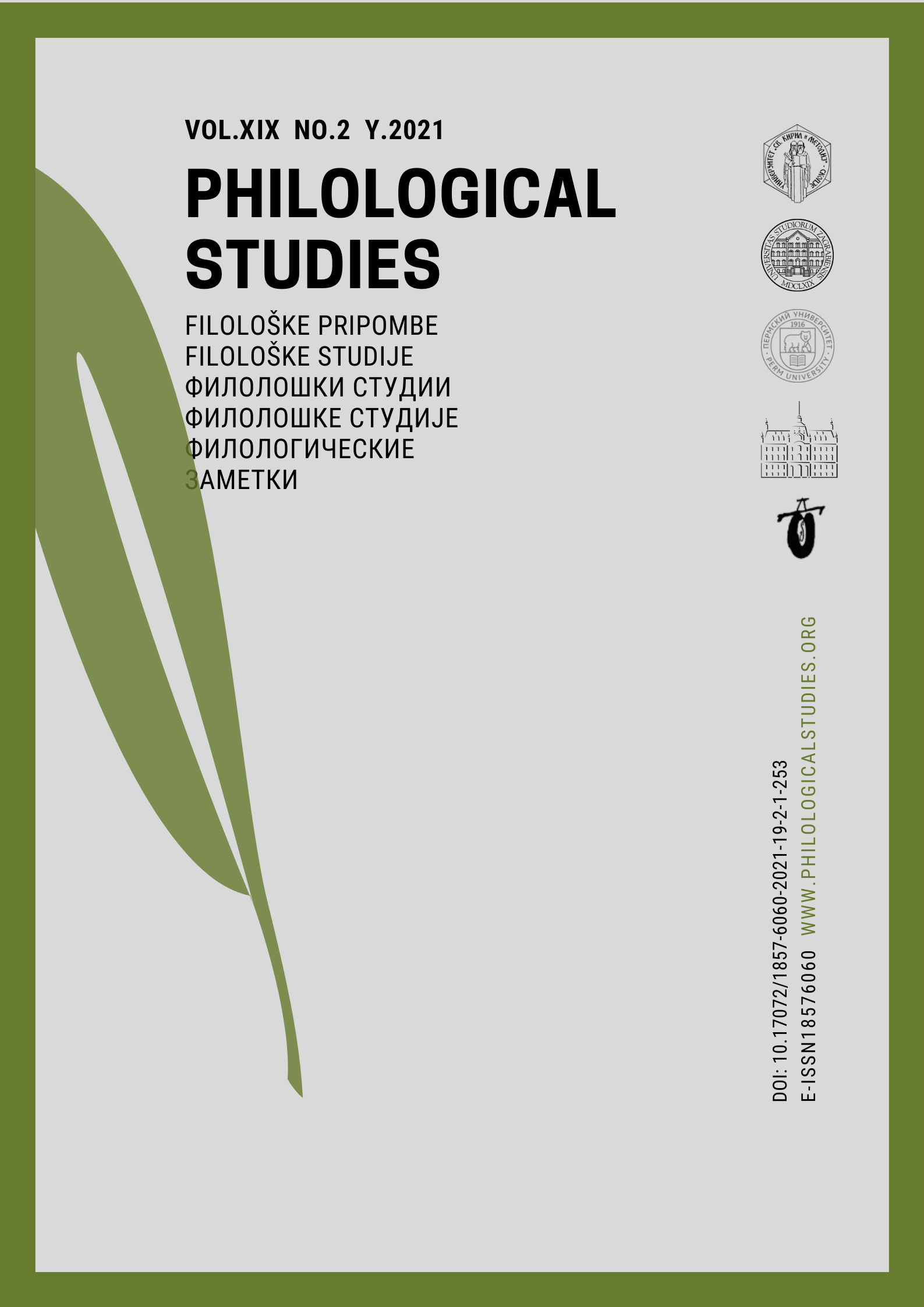THE PRINCIPLES OF YUGOSLAV CULTURAL POLICY (1945-1952)
Abstract
After World War II and the formation of the new Yugoslav state, the Communist Party of Yugoslavia began to establish a new political system. In the process of transformation of Yugoslav society, the resource of culture was crucial. The paper focuses on the basic principles upon which the cultural policy in the new Yugoslavia was built, whose specificity was largely conditioned by the current political and educational situation. Based on the available archival material, the paper analyzes the fundamental ideas in the specific field, in the periods before and after the conflict with the Information Bureau (Cominform). The differences between the two periods show how important the social factors are in the formulation of the goals of the cultural policy. Namely, in the first years there is a strong sovietization in the cultural field, where the following of the Soviet models in politics is especially noticeable. In the 1950s began desovietization, а process that consisted of abandoning the Soviet model of cultural practices, abandonment of the ideological matrix of socialist realism and introduction of self-administrative socialism, which would contribute to a certain democratization in the field of cultural production.
Downloads
References
Bošković, Dušan. (2011). Intelektualci u vlasti: društveni obrasci u formativnim godinama druge Jugoslavije. Filozofija i društvo 3 [Intellectuals in Power: Social Patterns in the Formative Years of Second Yugoslavia. Philosophy and Society 3]. 121-135. (In Serbian.)
Dimić, Ljubodrag. (1988). Agitprop kultura: agitpropovska faza kulturne politike u Srbiji 1945–1952 [Agitprop Culture: Agitprop Phase of Cultural Policy in Serbia 1945-1952]. Beograd: Rad. (In Serbian.)
Doknić, Branka. (2009). Kulturna politika Jugoslavije: 1945–1952. Vo: Doknić, Branka, Petrović, F. Milić, Hofman, Ivan. (Ur.). Kulturna politika Jugoslavije: 1945–1952. Zbornik dokumenta, 1 [Cultural Policy of Yugoslavia 1945–1952. In: Doknić, Branka, Petrović, F. Milić, Hofman, Ivan. (Eds.). Cultural Policy of Yugoslavia 1945–1952. A Collection of Documents 1]. Beograd: Arhiv Jugoslavije. (In Serbian.)
Gabrič, Aleš. (2008). Cenzura u Sloveniji posle Drugog svetskog rata: od komunističkog spiska zabranjenih knjiga do ukidanja t.z. ‘verbalnog delikta’ [Censorship in Slovenia after World War II: From the Communist Index Librorum Prohibitorum to Abolition of the “Verbal Offence”]. URL: https://www.nb.rs (Accessed: 08.05.2020). (In Serbian.)
Hofman, Ivan. (2005). Pod stegom Partije. Muzika socijalističkog realizma – primeri SSSR i Jugoslavije. Godišnjak za društvenu istoriju 1–3 [Under the flag of the Party. Music of Socialistic Realism – Cases of USSR and Yugoslavia. Annual of Social History 1–3]. 41-63. (In Serbian.)
Miletić, Aleksandar V. (2020). Milovan Đilas i francuski socijalisti 1950–1954. Tokovi istorije 1/2020 [Milovan Đilas and French Socialists 1950–1954. Currents of History 1/2020]. Beograd: Institut za noviju istoriju Srbije. 155-174. (In Serbian.)
Miller, Nick. (2007). Chapter 1. Simina 9a in a New Yugoslavia. In: The Nonconformists: Culture, Politics, and Nationalism in a Serbian Intellectual Circle, 1944'1991. Budapest: Central European University Press. URL: http://books.openedition.org/ceup/849 (Accessed: 22.05.2021).
Pejović, Marko. (2010). Sovjetski filmovi prikazani u jugoslaviji u organizaciji Društva za kulturnu saradnju Jugoslavije sa SSSR-om 1945-1948 godine. Godišnjak za društvenu istoriju 1 [Soviet Feature films in Yugoslavia 1945–1948. distributed by the Society of Cultural Cooperation between Yugoslavia and the USSR. Annual of Social History 1]. 89-101. (In Serbian.)
Popovska, Dragica. (2020). Politiki na konceptualizacija na prostorot vo Makedonija vo jugoslovenskiot socijalizam. Istorija 2/LV [Space Conceptualization Policies in Macedonia in Yugoslav Socialism. History 2/LV]. Skopje: Združenie na istoričarite na Republika Makedonija. 115-126. (In Macedonian.)
Prnjat, Dejana. (2014). Srpske državne nagrade za književno stvaralaštvo od 1945. do 1980. godine. Kultura, 145 [Serbian National Awards from 1945 to 1980. Culture, Vol. 145]. Beograd: Zavod za proučavanje kulturnog razvitka. 43-50. (In Serbian.)
Stojković, Branimir. (2014). O prirodi nagrade. Kultura, 145 [On Nature of Prize. Culture, Vol. 145]. Beograd: Zavod za proučavanje kulturnog razvitka. (In Serbian.)
Šarić, Tatjana. (2010). Djelovanje Agitpropa prema književnom radu i izdavaštvu u NRH, 1945–1952. RADOVI, 42 [Activity of the Agitprop in regard to Literary Work and Publishing in the People’s Republic of Croatia in 1945–1952. Works, Vol. 42]. Zagreb: Zavod za hrvatsku povijest. (In Croatian.)
Vučetić, Radina. (2011). Između avangarde i cenzure: Tito i umetnost šezdesetih. Tito – viđenja i tumačenja. Zbornik radova [Between Avant-Garde and Censhorship: Tito and the Art in 1960s. Tito – Insights and Interpretations. Miscellany]. Beograd: Institut za novu istoriju Srbije, Arhiv Jugoslavije. (In Serbian.)
Copyright (c) 2021 Dragica Popovska

This work is licensed under a Creative Commons Attribution-NonCommercial-NoDerivatives 4.0 International License.
Philological studies © 2019. This work is licensed under a Creative Commons Attribution-Noncommercial-No Derivative Works 3.0 Unported License










